History of Colorado Springs, CO: Colorado Springs's Interesting Local History
Posted by Lauren Schneider on Thursday, April 1st, 2021 at 12:31pm.
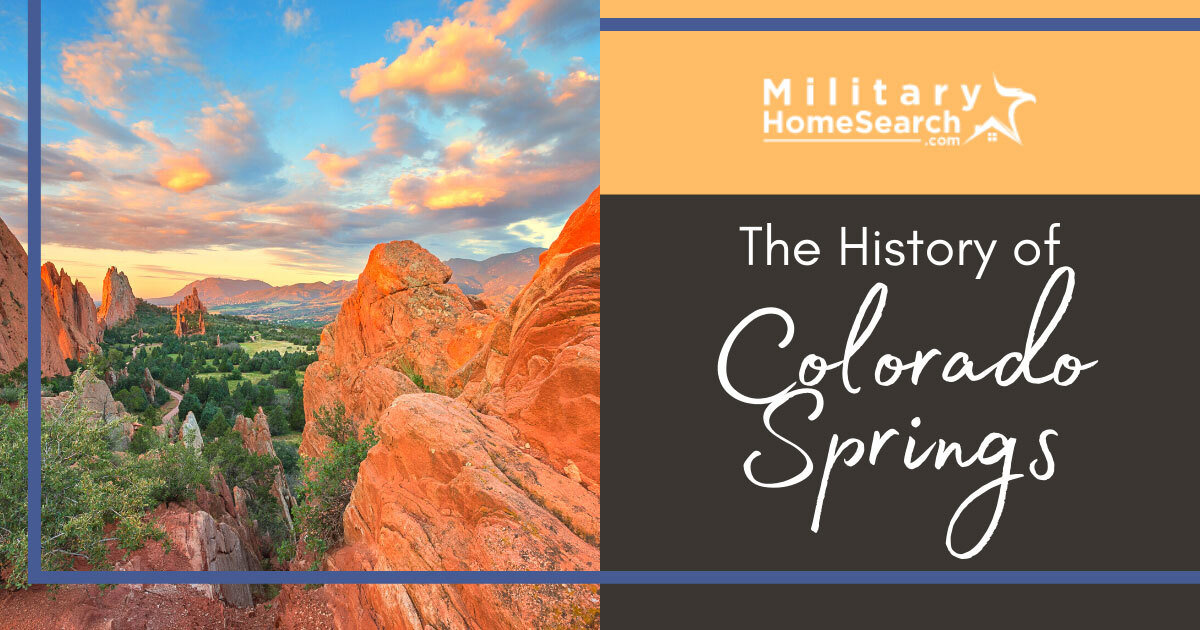
Colorado Springs has historical roots that began centuries ago by the first Native American inhabitants. Gold-seekers, developers, and inventors seeking wealth and glory continued the story, but are each just small pieces of the rich history of this mountain town in the shadow of Pikes Peak. Let's delve into the past and explore the history of Colorado Springs and how it came to be one of the U.S.'s most beloved tourist destinations.
The Ute Tribe: Colorado Springs' First Inhabitants
The Utes are thought to be some of the earliest settlers of what is Colorado Springs today. Having arrived from eponymous neighboring Utah centuries ago, the Ute Tribe consisted of 12 historic bands that often worked in unison as family units for trading, hunting, ceremonies, food gathering, and more.
Initially, the Ute traded predominantly with neighboring Puebloans and other Native tribes, but the arrival of European colonists changed their lives dramatically. The influence of the Spaniard presence transitioned the Utes from traditional warfare and hunting tactics by foot to ones on horseback—a major boost for the tribe's success.
Around the mid-1800s, gold was discovered in the region, bringing many new European explorers and prospectors to the lands. Increased traffic and settlers ultimately pressured the Utes off of the land. After battles that include the Walker War, the Black Hawk War, and the noted Meeker Massacre of 1879, the Ute retreated to established reservations.
The Pikes Peak Gold Rush
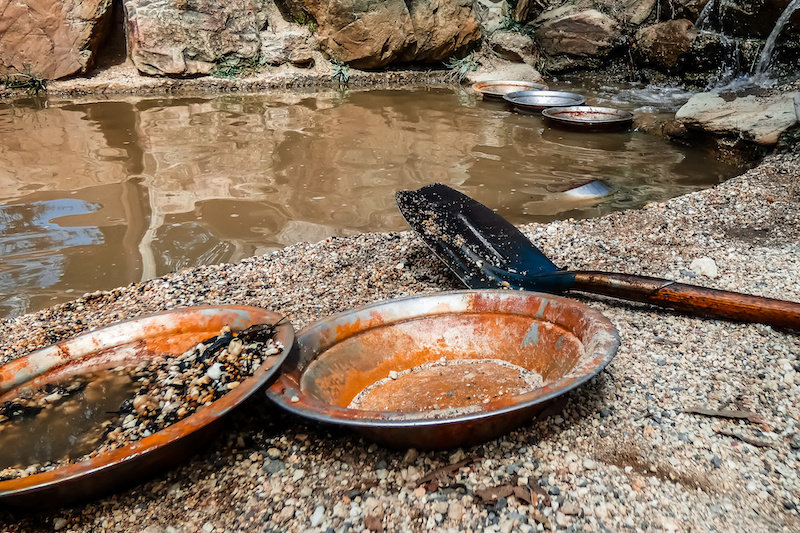 An influx of wealth-seekers swept the area around 1858 in a move that would later be known as the Colorado Gold Rush. Historians estimate that at least 100,000 individuals came to Pikes Peak searching for gold. Many remained after the end of the rush around 1861 when the Colorado Territory was officially established.
An influx of wealth-seekers swept the area around 1858 in a move that would later be known as the Colorado Gold Rush. Historians estimate that at least 100,000 individuals came to Pikes Peak searching for gold. Many remained after the end of the rush around 1861 when the Colorado Territory was officially established.
Known as the "Fifty-Niners," participants in this massive gold rush also created the famous motto "Pikes Peak or bust!" After all, the mountain was a literal beacon for newcomers hailing from the great plains and European settlements. Denver City and Boulder City began as mining camps, with many smaller camps being absorbed by larger towns and camps over time. Many miners were unsuccessful in finding gold but found themselves so drawn to the area that they and their households stayed.
The Founding and Incorporation of Colorado Springs
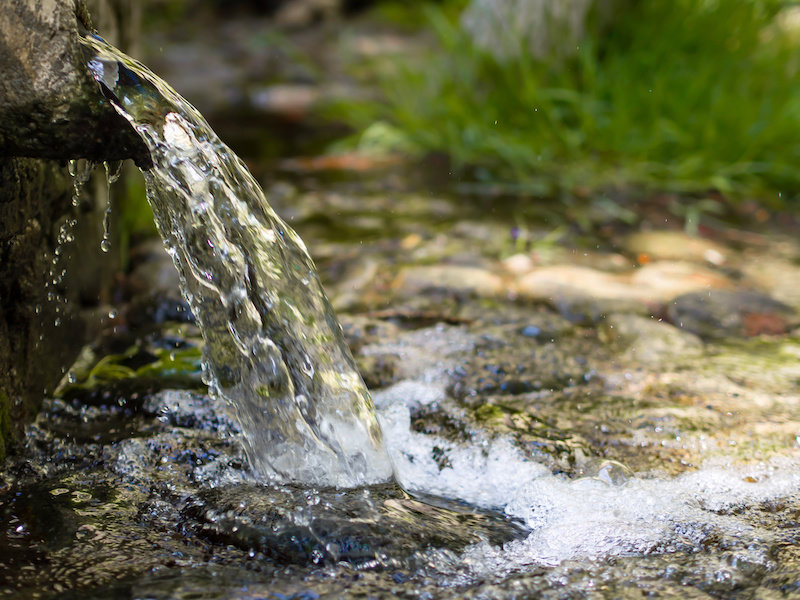 Around 1870, Dr. William Bell of England and Civil War General William Jackson Palmer traveled into the Colorado Territory in search of potential railroad routes to develop. This exploration led the pair to discover mineral springs in the area, resulting in Fountain Colony's founding outside Colorado City in mid-1871.
Around 1870, Dr. William Bell of England and Civil War General William Jackson Palmer traveled into the Colorado Territory in search of potential railroad routes to develop. This exploration led the pair to discover mineral springs in the area, resulting in Fountain Colony's founding outside Colorado City in mid-1871.
The healing waters of the springs became widely popular as a place for the treatment of tuberculosis and quickly led to the community becoming known as Colorado Springs. They were a vital part of the city's infrastructure, serving not only as bathing spots but the water source for over 60 miles of street-side canals to provide drinking water for citizens from Ruxton Creek in 1879.
New developments, rail access, and stunning scenery established the Pikes Peak area as one of the U.S.'s top destinations for travelers during the late 19th century. Many individuals such as artists, writers, and transients from England came for inspiration and to view natural wonders like Cheyenne Canyon, Garden of the Gods, Pikes Peak, and Glen Eyrie. Many opted to remain and call Colorado Springs a permanent home.
The establishment of the Rio Grande and Denver Railroads in 1871 boosted population levels that lead to Colorado Springs taking over from Old Colorado City as the county seat in 1873. However, Colorado Springs wasn't officially incorporated until June 1886.
Colorado Springs Takes Shape
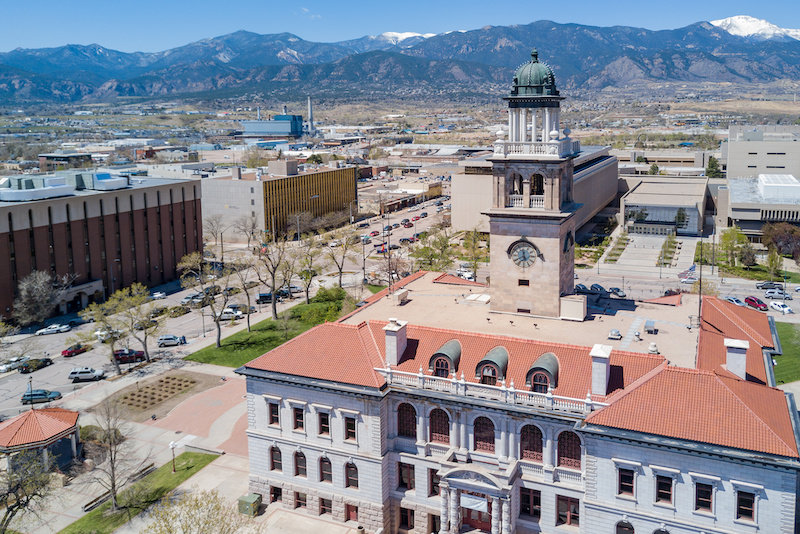 The 19th- and 20th-century era in Colorado Springs is where the community truly began taking shape as the city it is today. The development of service lines, including the Colorado Midland Railroad, Pacific Railroad, Chicago, and Rock Island railways, between 1885 and 1889 were pivotal for the city's growth. The Colorado Springs Rapid Transit Railway Company developed a trolley line running to and from Manitou Springs in 1890. Together, these transportation improvements allowed the city's population to increase to 11,140 residents—a 164% increase between 1880 and 1890.
The 19th- and 20th-century era in Colorado Springs is where the community truly began taking shape as the city it is today. The development of service lines, including the Colorado Midland Railroad, Pacific Railroad, Chicago, and Rock Island railways, between 1885 and 1889 were pivotal for the city's growth. The Colorado Springs Rapid Transit Railway Company developed a trolley line running to and from Manitou Springs in 1890. Together, these transportation improvements allowed the city's population to increase to 11,140 residents—a 164% increase between 1880 and 1890.
Capitalizing upon a big deposit of gold at Cripple Creek in 1891, many of the residents gained incredible wealth and were willing to invest it into the community in various ways. In addition to building large homes in the Wood Avenue area and around the then undeveloped Colorado Springs downtown region, major growth shortly followed.
The construction of large structures such as the Antlers Hotel, the city library and courthouse, Colorado College, and St. Mary's Church took place in the late 1890s and early 1900s. This was all done in anticipation of an even greater population surge as the city became more inviting and modern as a whole.
Around 1898, the annexation of Old Colorado City, Roswell, Ivywild, and other smaller communities began occurring. Colorado Springs was then divided into quadrants with official fire alarm zones and voting precincts to serve local interests. The famous Nikola Tesla energy experimental station cropped up on Knob Hill in 1899, creating excitement.
Between 1918 and the 1930s, quite a few wealthy benefactors stepped up to provide even greater access for goods, services, and entertainment for locals. William Jewett donated the Colorado Springs Golf course to the city, while the Penrose family financed Pikes Peak Highway, the Broadmoor Resort, and the Cheyenne Mountain Zoo around 1820.
Over the next two decades, further additions included the establishment of noted facilities, including:
- The Colorado Springs Municipal Airport
- The Myron Stratton Home
- The County Courthouse & City Hall
- The First Local Post Office
- The Mining Exchange Building, now a hotel
The trolley system continued expanding, and many of the larger homes in the city were transformed into apartments and boarding houses during the Great Depression in the 30s when housing was in short supply.
United States Military Bases in Colorado Springs
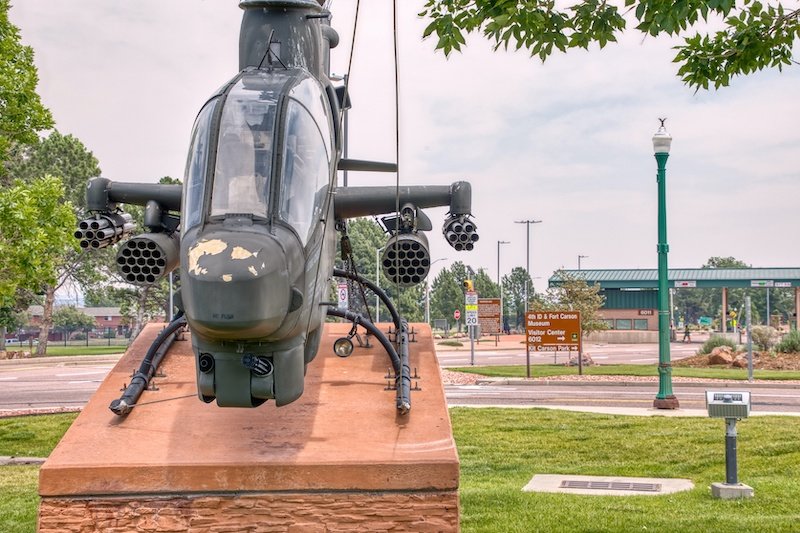 This history of the US military in Colorado Springs grew from basic installations into some of the nation's most important bases and facilities. The land was originally bought near the city's southern border and donated to the Department of War. After the attacks on Pearl Harbor, Camp Carson (later renamed Fort Carson) was established as a training facility for the Army in preparation for WWII.
This history of the US military in Colorado Springs grew from basic installations into some of the nation's most important bases and facilities. The land was originally bought near the city's southern border and donated to the Department of War. After the attacks on Pearl Harbor, Camp Carson (later renamed Fort Carson) was established as a training facility for the Army in preparation for WWII.
The municipal airport was renamed Peterson Field in 1942 for photo recon training by the Air Force. Upon the war's conclusion, the military presence reduced until the Korean War. Around 1950, Ent Air Force Base was developed along with the United States Air Force Academy, which served as NORAD headquarters for decades until the permanent Cheyenne Mountain facility was built.
Considering Making Historic Colorado Springs Your New Home?
Colorado Springs is a modern city that still retains its historical charm and small-town feel. If moving to this city is a possibility in your future, make a visit and dive into the history. Whether you're dreaming of a sprawling luxury home or a cozy townhouse, Colorado Springs may be the city for you.
If you're inspired by the opportunities in Colorado Springs, contact The Military Home Search Team of eXp Realty at (719) 338-7294 to get in touch with a local real estate agent and find the ideal Colorado Springs home for you today.
